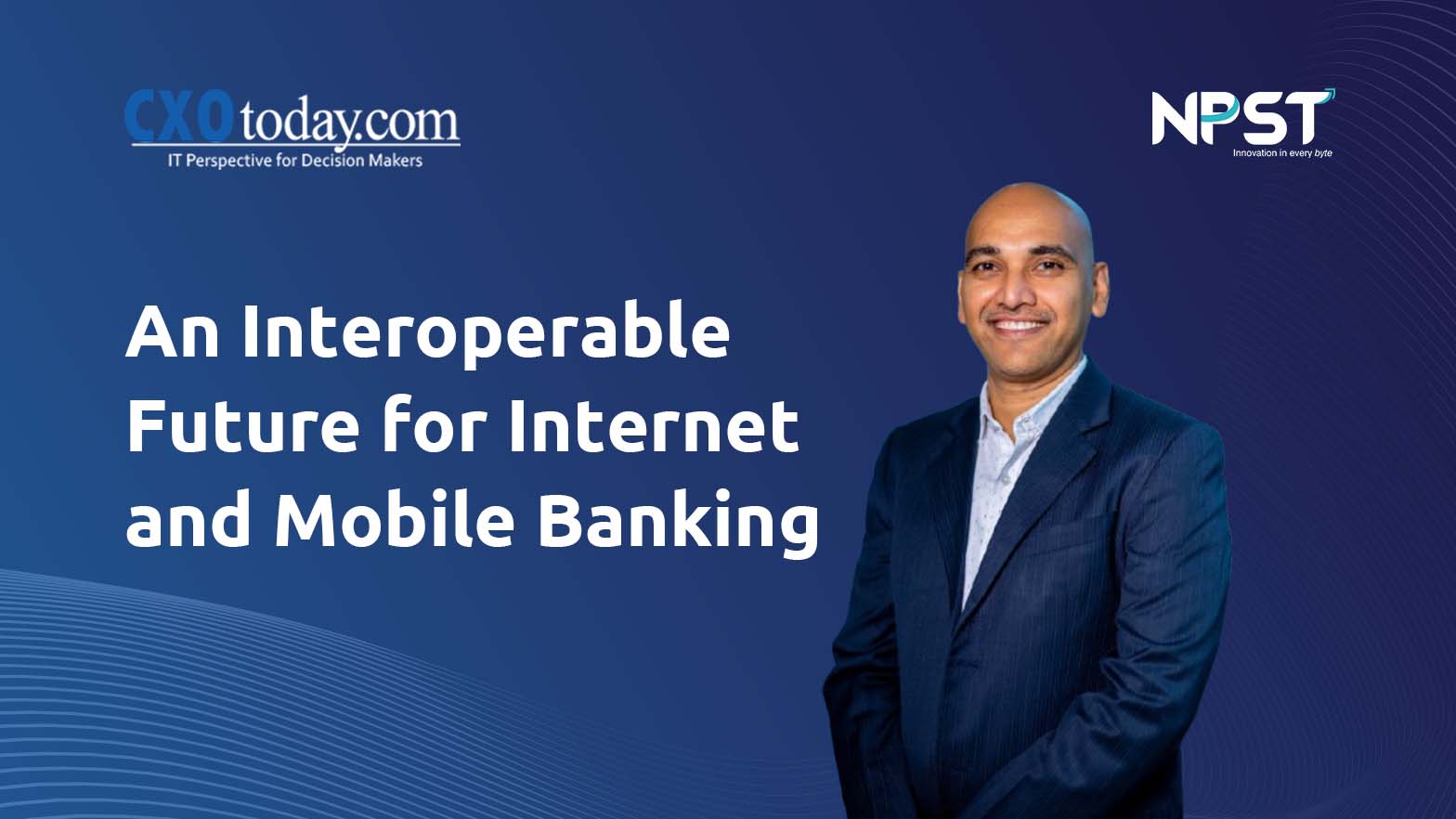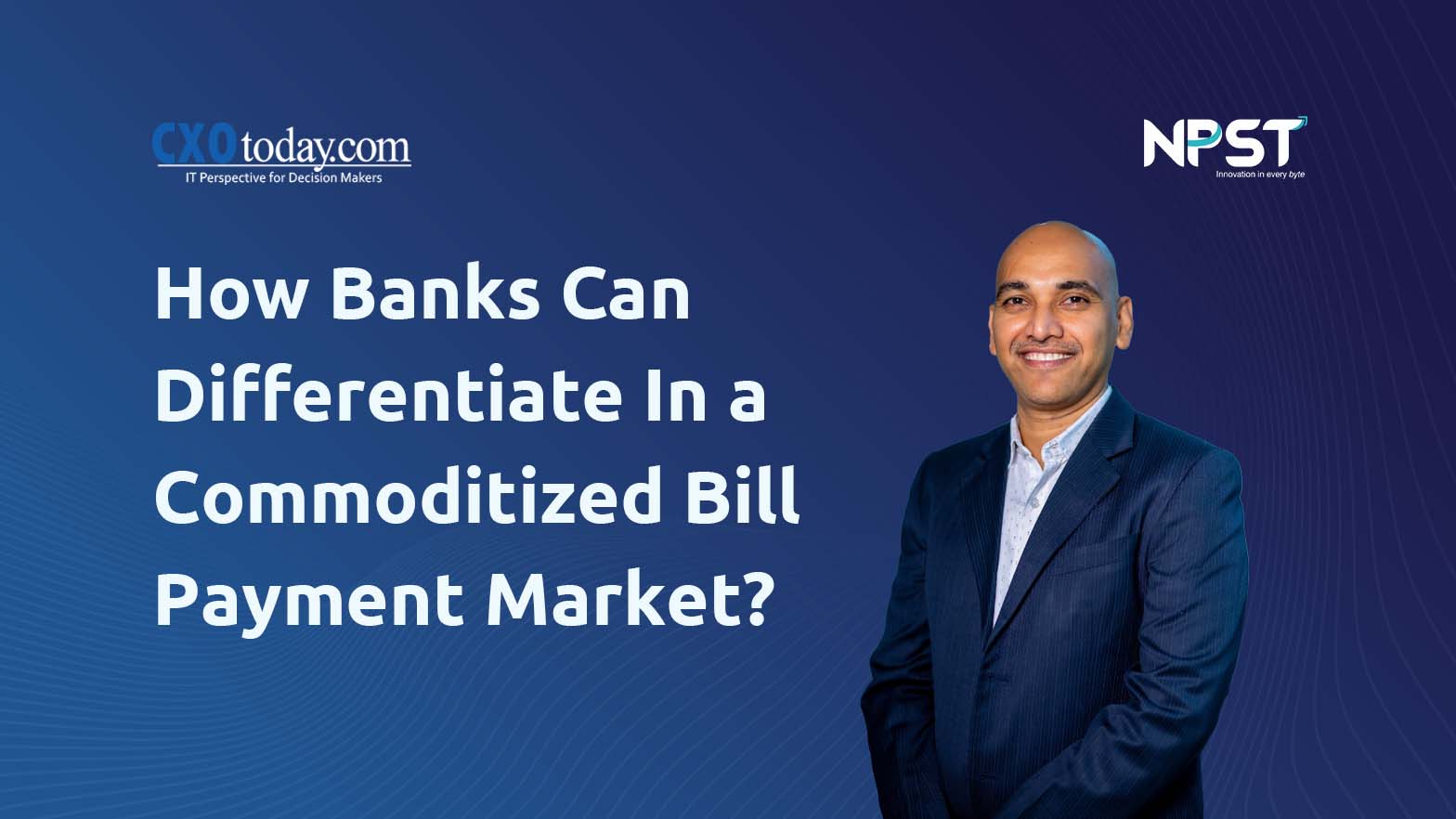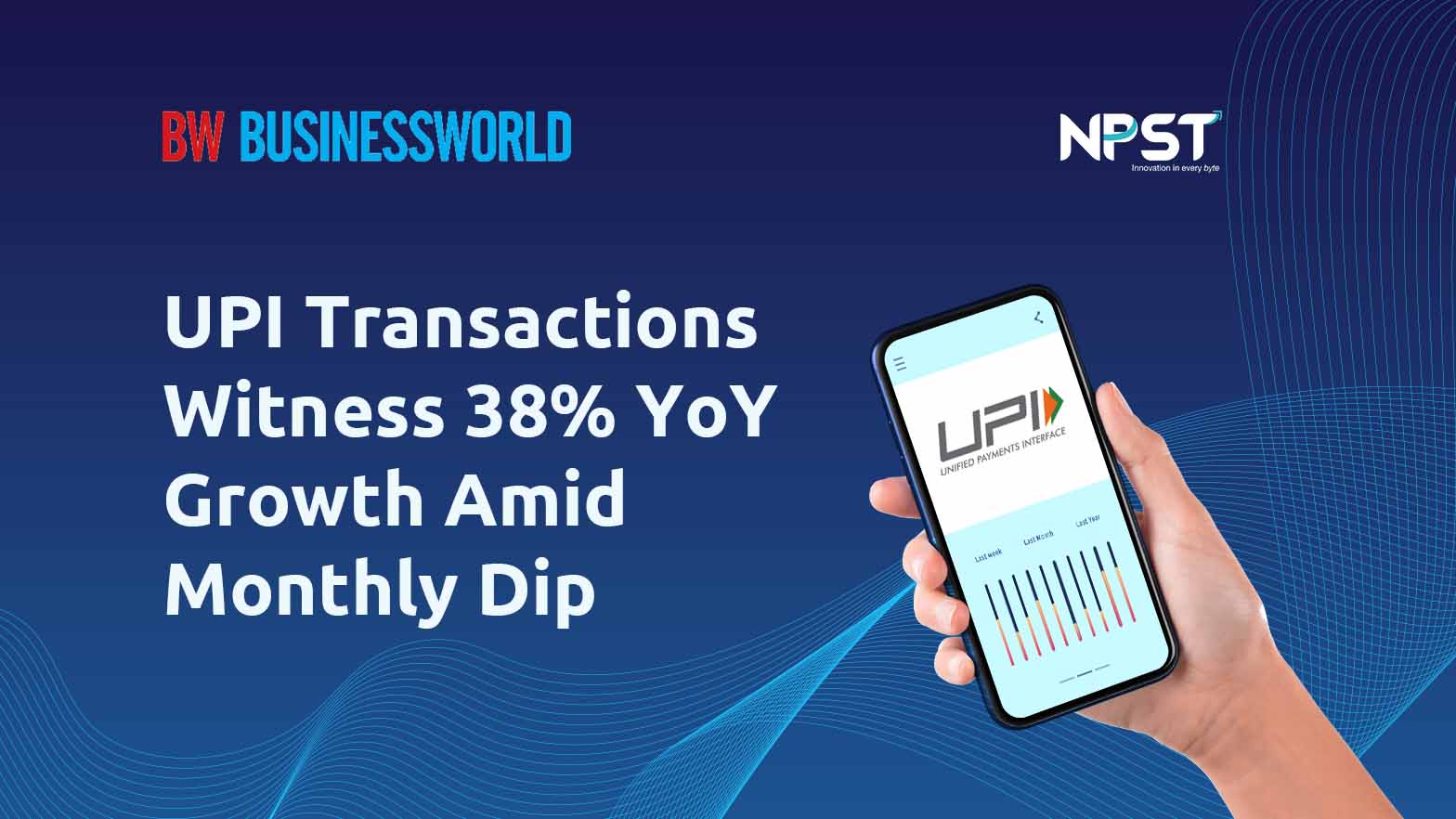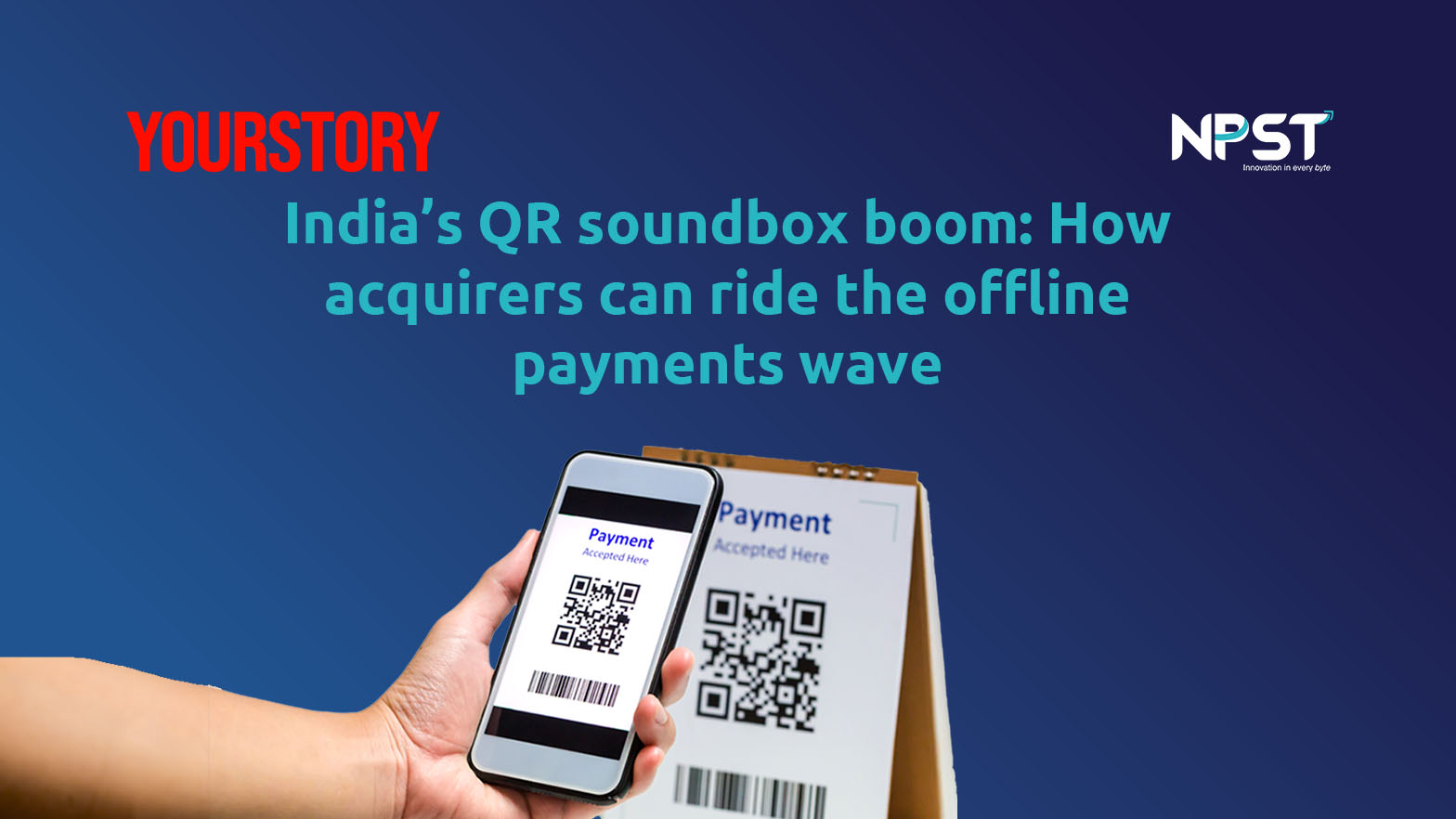By Deepak Chand Thakur, CEO & Co-founder, NPST
The pressure to modernize technology in the banking sector has reached a tipping point. Banks that fail to upgrade their infrastructure face severe risks to their competitive standing, reputation, and ability to comply with ever-tightening regulatory standards. Modernization goes beyond satisfying customer expectations; it’s essential for surviving in an environment where governments and regulatory bodies demand greater compliance and operational efficiency. Legacy systems are no longer adequate to meet these escalating demands.
UPI’s Growth Reveals the Strain on Legacy Systems
India’s Unified Payments Interface (UPI) has transformed the digital payments landscape, reaching both urban and rural areas. Currently accounting for over 90% of all digital transactions in India, UPI has seen rapid growth in transaction volumes—hitting a record 15 billion transactions and 500 million daily in September alone. This surge has highlighted the limitations of legacy banking systems, particularly for banks relying on first-generation UPI switches. Frequent outages and unplanned downtime are becoming more common, eroding customer confidence and impacting revenue streams.
Scalability Issues with Legacy Systems
The inability of older systems to scale is emerging as a critical challenge. Legacy infrastructures, which were never designed to manage such enormous transaction volumes or accommodate the increasingly complex nature of payment channels, are becoming a roadblock to progress. Banks now face integration cycles that take anywhere from 12 to 18 weeks for new features—timelines that are too slow for the fast-evolving payments industry. As UPI grows to support prepaid cards, wallets, and IoT-enabled devices like smartwatches and connected cars, the strain on these first-generation systems increases, limiting growth and operational efficiency.
The Dilemma: Change vs. Stagnation
Banks recognize the urgent need to modernize their UPI infrastructure but are caught between two significant risks: making large-scale changes or doing nothing. Replacing an entire system isn’t always feasible due to the sheer scale and critical nature of these platforms. Yet, failure to modernize means banks risk falling behind in a market that demands constant innovation, flexibility, and smooth performance.
A Path Forward: Secure, Scalable, and Agile Solutions
Addressing the Rising Need for Tech Modernization in Banking: A Multi-Switch Approach
As banks navigate a rapidly evolving payment landscape, modernizing infrastructure is more critical than ever. A full system overhaul may not be practical due to operational complexities but adopting a multi-switch model offers a balanced solution. This approach enables innovation while minimizing risk, especially given the surge in UPI transactions, which highlights the limitations of relying on a single Technology Service Provider (TSP). The multi-switch strategy allows banks to integrate next-generation systems alongside legacy infrastructure. With modular, plug-and-play architectures, this approach ensures scalability, adaptability, and faster product launches without being hindered by outdated systems. It empowers banks to meet their business goals, whether through product innovation, scaling operations, or embracing cutting-edge technology.
As banks navigate a rapidly evolving payment landscape, modernizing infrastructure is more critical than ever. A full system overhaul may not be practical due to operational complexities but adopting a multi-switch model offers a balanced solution. This approach enables innovation while minimizing risk, especially given the surge in UPI transactions, which highlights the limitations of relying on a single Technology Service Provider (TSP). The multi-switch strategy allows banks to integrate next-generation systems alongside legacy infrastructure. With modular, plug-and-play architectures, this approach ensures scalability, adaptability, and faster product launches without being hindered by outdated systems. It empowers banks to meet their business goals, whether through product innovation, scaling operations, or embracing cutting-edge technology.
Channel-Specific Switches for Varied Banking Needs
The multi-switch framework also enables banks to deploy switches for specific channels. For instance, dedicated switches can be introduced for IFSC-based account transactions, prepaid payment instruments (PPI), and credit card processing. Smaller financial institutions can even introduce credit line-specific switches, allowing them to offer customized credit products for niche markets.
Next-generation switch architectures take advantage of microservices, enabling banks to scale specific services independently by optimizing resources and enhancing system responsiveness to fluctuating demand. Additionally, real-time databases designed for high-volume transactions can process data in milliseconds, ideal for UPI’s immense transaction load.
The multi-switch framework also enables banks to deploy switches for specific channels. For instance, dedicated switches can be introduced for IFSC-based account transactions, prepaid payment instruments (PPI), and credit card processing. Smaller financial institutions can even introduce credit line-specific switches, allowing them to offer customized credit products for niche markets.
Next-generation switch architectures take advantage of microservices, enabling banks to scale specific services independently by optimizing resources and enhancing system responsiveness to fluctuating demand. Additionally, real-time databases designed for high-volume transactions can process data in milliseconds, ideal for UPI’s immense transaction load.
Adapting to Consumer Expectations and Emerging Technologies
The payment landscape is evolving quickly, with innovations like eRUPI, UPI-linked credit lines, and IoT-based commerce channels. For example, customers now expect to make payments using voice commands with virtual assistants in their cars. New-generation switches seamlessly integrate these emerging capabilities, helping banks remain competitive by launching innovative services faster.
The payment landscape is evolving quickly, with innovations like eRUPI, UPI-linked credit lines, and IoT-based commerce channels. For example, customers now expect to make payments using voice commands with virtual assistants in their cars. New-generation switches seamlessly integrate these emerging capabilities, helping banks remain competitive by launching innovative services faster.
Strengthening Security and Enhancing Performance with Real-Time Fraud Detection and AI Integration
The rise of real-time payments has heightened fraud risks, with over 25,000 UPI-related complaints by June, underscoring the need for robust security. Next-generation switches integrate real-time fraud detection systems, continuously monitoring transactions and flagging suspicious activities. Embedding these security measures directly into payment architecture helps prevent fraud before it becomes costly. Even a technical decline rate below 1% can cause significant revenue losses at UPI’s scale. To mitigate this, AI and machine learning (ML) tools are embedded into first-generation switches, analyzing transaction data to detect and resolve technical issues proactively, ensuring smooth customer experiences.
The rise of real-time payments has heightened fraud risks, with over 25,000 UPI-related complaints by June, underscoring the need for robust security. Next-generation switches integrate real-time fraud detection systems, continuously monitoring transactions and flagging suspicious activities. Embedding these security measures directly into payment architecture helps prevent fraud before it becomes costly. Even a technical decline rate below 1% can cause significant revenue losses at UPI’s scale. To mitigate this, AI and machine learning (ML) tools are embedded into first-generation switches, analyzing transaction data to detect and resolve technical issues proactively, ensuring smooth customer experiences.
Embracing the Future of Payments with Agility
In the context of the digital payment revolution, modernizing payment systems is vital for banks to remain competitive. Legacy systems hinder efficiency, scalability, and profitability. By embracing a multi-switch approach, banks can modernize infrastructure, improve performance, mitigate risk, and meet consumer demands for innovative, seamless payment experiences. This multi-switch strategy allows banks to navigate the future of payments with agility—improving efficiency, enhancing customer loyalty, and positioning themselves as leaders in the digital banking landscape.
Contact us at sales@npstx.com to know more.
Contact us at sales@npstx.com to know more.
Featured in:
ELETS BFSI
ELETS BFSI
Explore More
We empower banks and payment aggregators to achieve success at every step of the transaction journey











